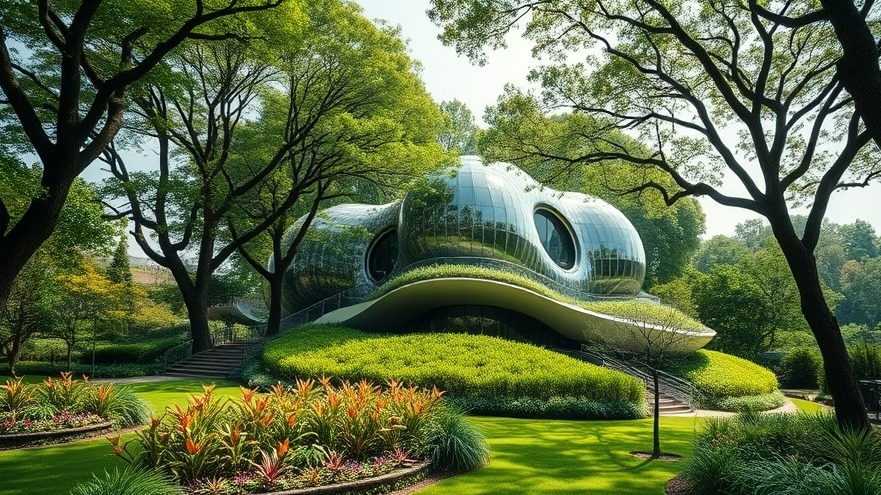
Exploring the Eco-Friendly Design of the Carbon Garden Pavilion
The recently unveiled Carbon Garden Pavilion at Kew Gardens signifies a remarkable blending of creativity and sustainability. Designed by Mizzi Studio, this striking structure draws inspiration from nature, resembling a whimsical mushroom. This innovative architecture aims not only to please the eye but also to underscore the importance of environmental consciousness in modern design.
Comfort and Efficiency for Remote Work
For digital nomads often seeking new workspaces, the design principles evident in the Carbon Garden Pavilion can influence how we create our own remote working environments. A key focus of the pavilion is the integration of natural light and organic shapes, which can foster a more inspiring and less sterile workspace. Ensuring proper lighting is crucial for productivity and mood, and the pavilion showcases how thoughtful design can aid in achieving this.
Prioritizing Ergonomics in Work Environments
The ergonomic value of the pavilion’s design is noteworthy. Smooth curves and open spaces allow for comfortable movement and interaction, mirroring what we should aim for in our personal workspaces. By prioritizing ergonomics—such as ensuring that desk heights and seating arrangements are adjustable—we can significantly enhance our ability to work efficiently and comfortably.
Inspiration from Natural Forms
Architectural decisions frequently echo the natural forms that surround us, and the Carbon Garden Pavilion exemplifies this principle by mimicking organic and flowing shapes. Implementing this design ethos can translate into personal workspaces through the use of natural materials, soft textures, and rounded furniture elements—creating an ambiance that feels both warm and inviting.
The Role of Nature in Enhancing Well-being
Surrounding ourselves with nature has been shown to enhance well-being and productivity. The pavilion's introduction of greenery not only beautifies the space but also has psychological benefits. Digital nomads can cultivate their own productive environments by incorporating plants into their setups. This can be as simple as a small desk plant or even a window box filled with herbs or colorful flowers.
Future Insights: How This Pavilion Inspires Tomorrow’s Workspaces
Looking ahead, the design paradigm set by structures like the Carbon Garden Pavilion encourages us to reimagine our workspaces. As remote work continues to rise in popularity, we must consider how our environments affect our mindset and productivity. Drawing inspiration from such innovative designs could set new standards for workspace ergonomics and aesthetics, paving the way for future sustainable architecture that prioritizes both form and function.
Final Thoughts on Personalizing Your Remote Workspace
Ultimately, the lessons we draw from the Carbon Garden Pavilion extend far beyond its physical attributes. It encourages us to reflect on how we can create workspaces that not only look good but also feel good. Embracing ergonomics and sustainability can lead to profound changes in our working habits, making remote work a more effective and enjoyable experience.
As you rethink your workspace, remember to integrate elements of comfort, inspiration, and ergonomic design. Taking the time to refine your remote work environment can make a significant difference in productivity and overall satisfaction. So, create a lovely, functional place that fits your lifestyle.
 Add Row
Add Row  Add
Add 




Write A Comment